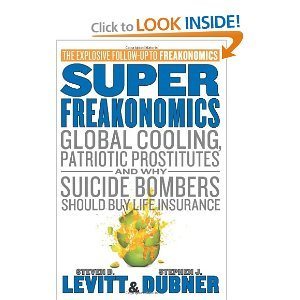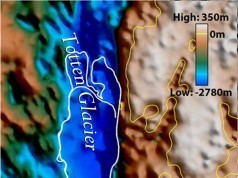Superfreakonomics first appeared in late 2009, I was immensely entertained by its discussion of horse manure (pp. 8-12).
When we cast our minds back to the time of horse-drawn carriages many of us see plumed hats, ball gowns, and romance. That’s because what we’re “remembering” is actually a sanitized fantasy.
The Superfreakonomics authors draw heavily on the work of Eric Morris, whose urban planning Masters thesis explored the reality of horse-based transportation in 19th century cities. A user-friendly encapsulation of his research appears in an 8-page article here. (It was published in Access, a U of California transportation publication. The entire issue is available here.)
Morris points out that, by the late 1800s, large urban centers were “drowning in horse manure.” Not only were there no solutions in sight, people were making dire predictions:
In 1894, the Times of London estimated that by 1950 every street in the city would be buried nine feet deep in horse manure. One New York prognosticator of the 1890s concluded that by 1930 the horse droppings would rise to Manhattan’s third-story windows.
Horses are lovely animals, but when crowded into cities they cause a variety of problems. The 15 to 30 pounds of manure produced daily by each beast multiplied by the 150,000+ horses in New York city resulted in more than three million pounds of horse manure per day that somehow needed to be disposed of. That’s not to mention the daily 40,000 gallons of horse urine.
In other words, cities reeked. As Morris says, the “stench was omnipresent.” Here are some fun bits from his article:
Urban streets were minefields that needed to be navigated with the greatest care. Crossing sweepers stood on street corners; for a fee they would clear a path through the mire for pedestrians. Wet weather turned the streets into swamps and rivers of muck, but dry weather brought little improvement; the manure turned to dust, which was then whipped up by the wind, choking pedestrians and coating buildings.
even when it had been removed from the streets the manure piled up faster than it could be disposed of.early in the century farmers were happy to pay good money for the manure, by the end of the 1800s stable owners had to pay to have it carted off. As a result of this glut.vacant lots in cities across America became piled high with manure; in New York these sometimes rose to forty and even sixty feet.
We need to remind ourselves that horse manure is an ideal breeding ground for flies, which spread disease. Morris reports that deadly outbreaks of typhoid and “infant diarrheal diseases can be traced to spikes in the fly population.”
Comparing fatalities associated with horse-related accidents in 1916 Chicago versus automobile accidents in 1997, he concludes that people were killed nearly seven times more often back in the good old days. The reasons for this are straightforward:
horse-drawn vehicles have an engine with a mind of its own. The skittishness of horses added a dangerous level of unpredictability to nineteenth-century transportation. This was particularly true in a bustling urban environment, full of surprises that could shock and spook the animals. Horses often stampeded, but a more common danger came from horses kicking, biting, or trampling bystanders. Children were particularly at risk.
Falls, injuries, and maltreatment also took a toll on the horses themselves. Data cited by Morris indicates that, in 1880, more than 3 dozen dead horses were cleared from New York streets each day (nearly 15,000 a year).
I find all of the above fascinating for two reasons. The first is that it’s abundantly clear that people who think we can address modern environmental concerns by returning to the era of the horse-drawn carriage have got things backwards. In the words of Morris, in the early years of the 20th century:
.the private automobile was widely hailed as an environmental savior. In the span of two decades, technology eradicated a major urban planning nightmare that had strained governments to the breaking point, vexed the media, tormented the citizenry, and brought society to the brink of despair.
In the second instance, I find this tale encouraging because it demonstrates that technology and innovation are the answer. In 1898 an international meeting of urban planners called a halt to their 10-day long conference after only three days. Why? Because they felt impotent in the face of their most pressing issue: the horse manure problem.
Not long afterward, a solution appeared. It took the form of the internal combustion engine and the family car. From the perspective of most people of that era, this solution came out-of-nowhere. It was wholly unanticipated. And it changed everything.
Today, some environmental activists (and European Union bureaucrats) would have us believe the only sensible response to climate concerns is to to narrow (rather than expand) the public’s transportation options. Without such measures they say, the worst will happen. But these people have no more insight into what the future holds than the commentators who were certain the streets would be nine feet deep in manure by 1950.
We often hear that climate change is accelerating, that everything is worse than we thought. The truth of these statements is highly debatable. What seems far more clear-cut is that the pace of technological innovation is accelerating. New ideas come to market faster than ever before. The time it takes for life-changing technologies to be adopted by the general public grows ever shorter. (See the wonderful graphic on page 2 of this 6-page PDF and this essay.)
This means we have more reason than those who inhabited the smelly cities of the late 1800s to expect that technology will solve some of our biggest challenges. This applies whether we believe climate change is a serious threat or not. To quote the Superfreakonomics authors:
When the solution to a given problem doesn’t lay right before our eyes, it is easy to assume that no solution exists. But history has shown again and again that such assumptions are wrong.
This is not to say the world is perfect. Nor that all progress is always good.But humankind has a great capacity for finding technological solutions to seemingly intractable problems, and this will likely be the case for global warming. It isn’t that the problem isn’t potentially large. It’s just that human ingenuity – when given proper incentives – is bound to be larger. Even more encouraging, technological fixes are often far simpler, and therefore cheaper, than the doomsayers could have imagined. [bold added, p. 11]
In other words, the future is bright. And there’s good reason to believe it contains less – not more – horse manure.






